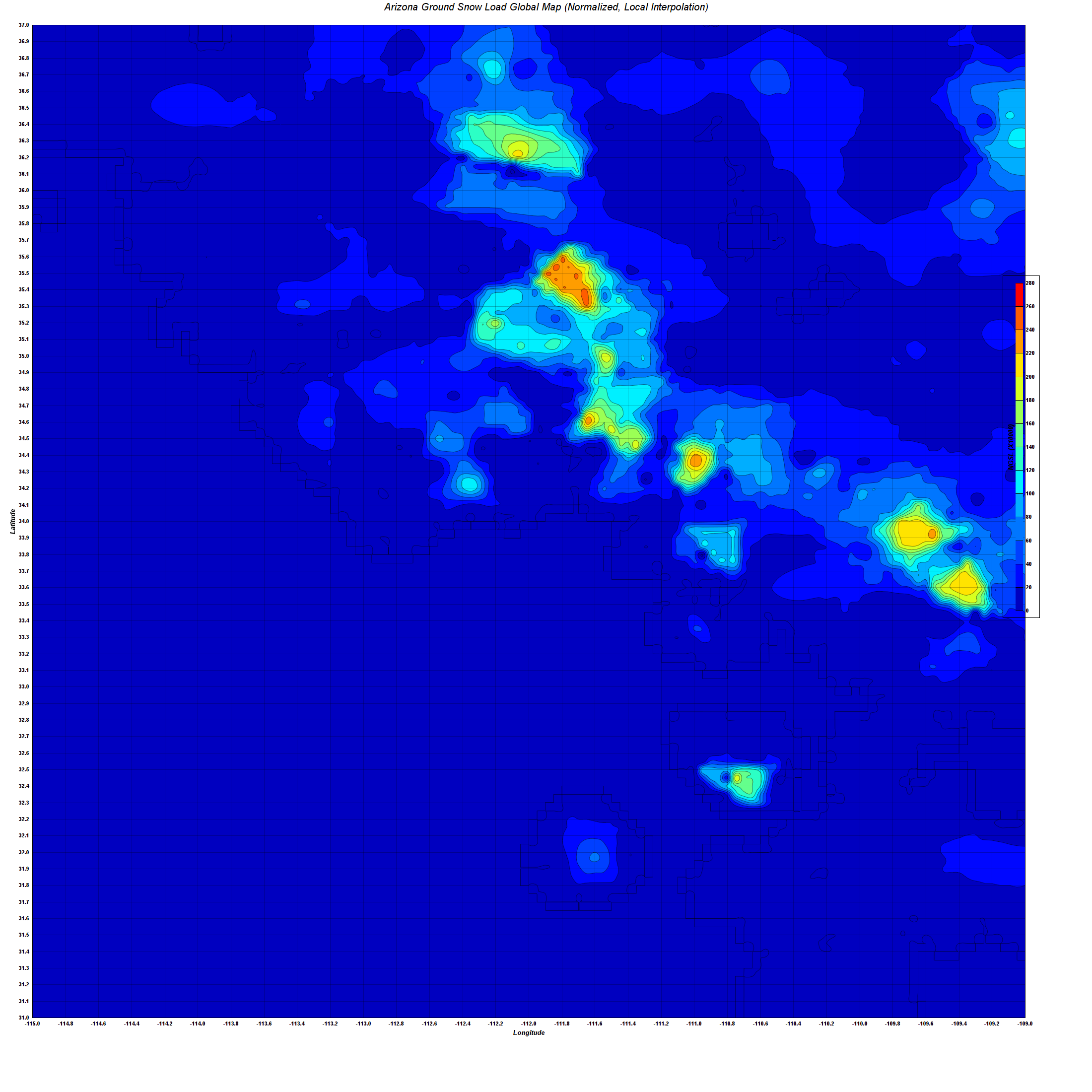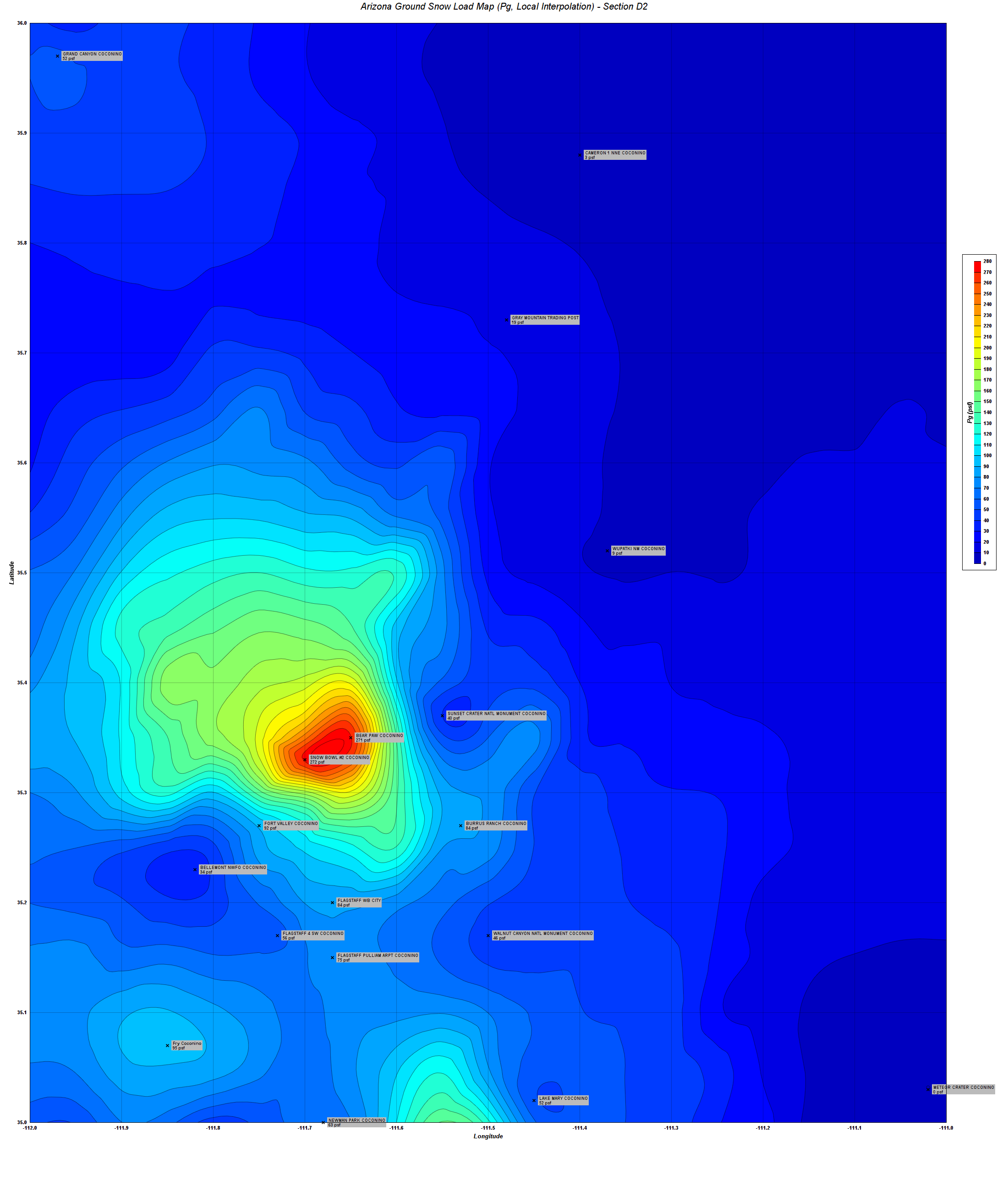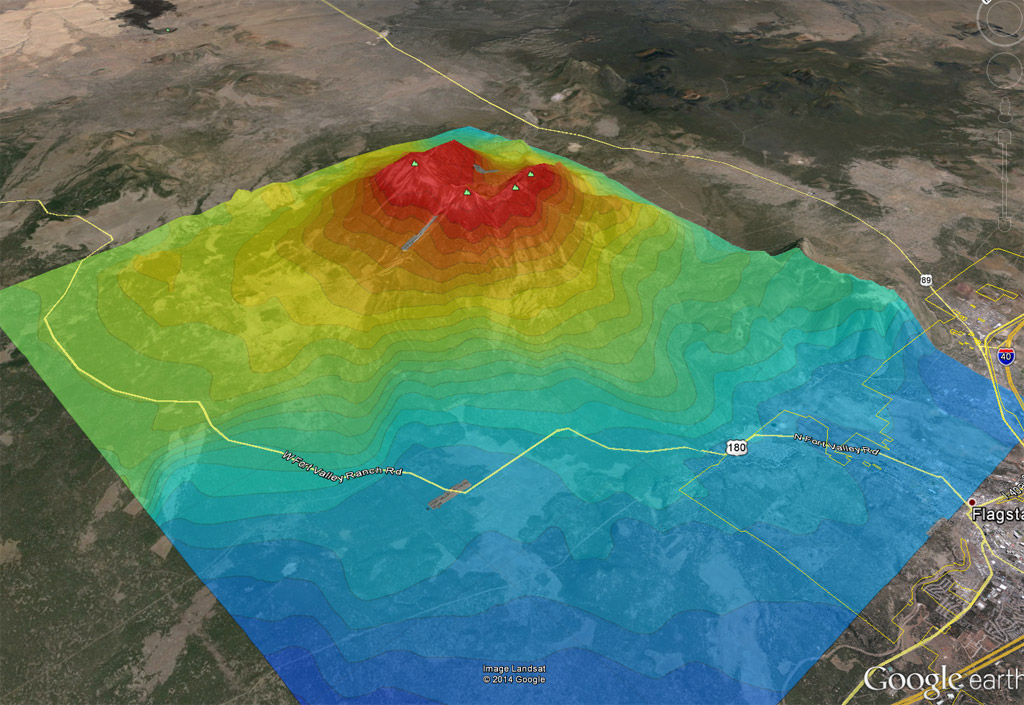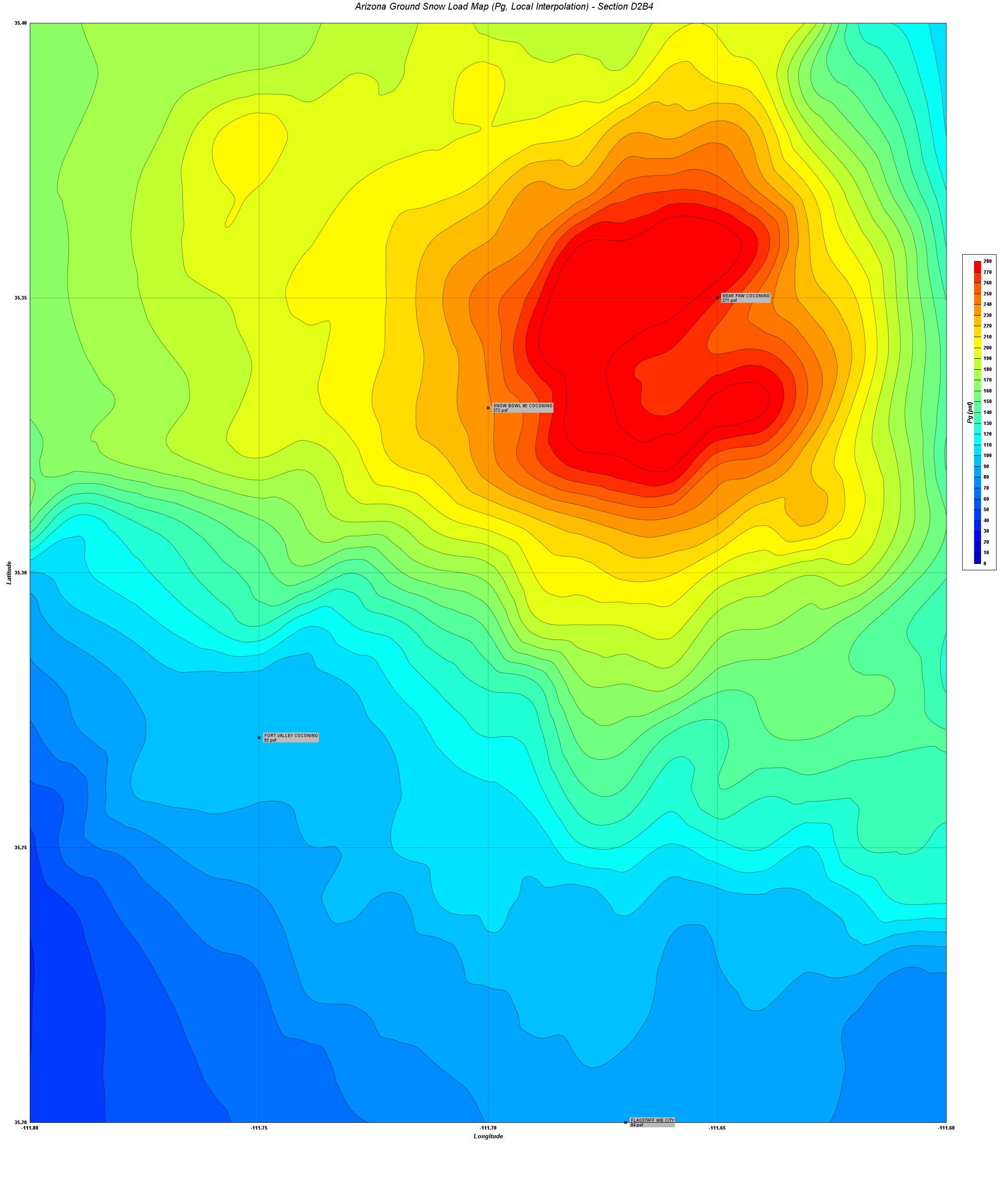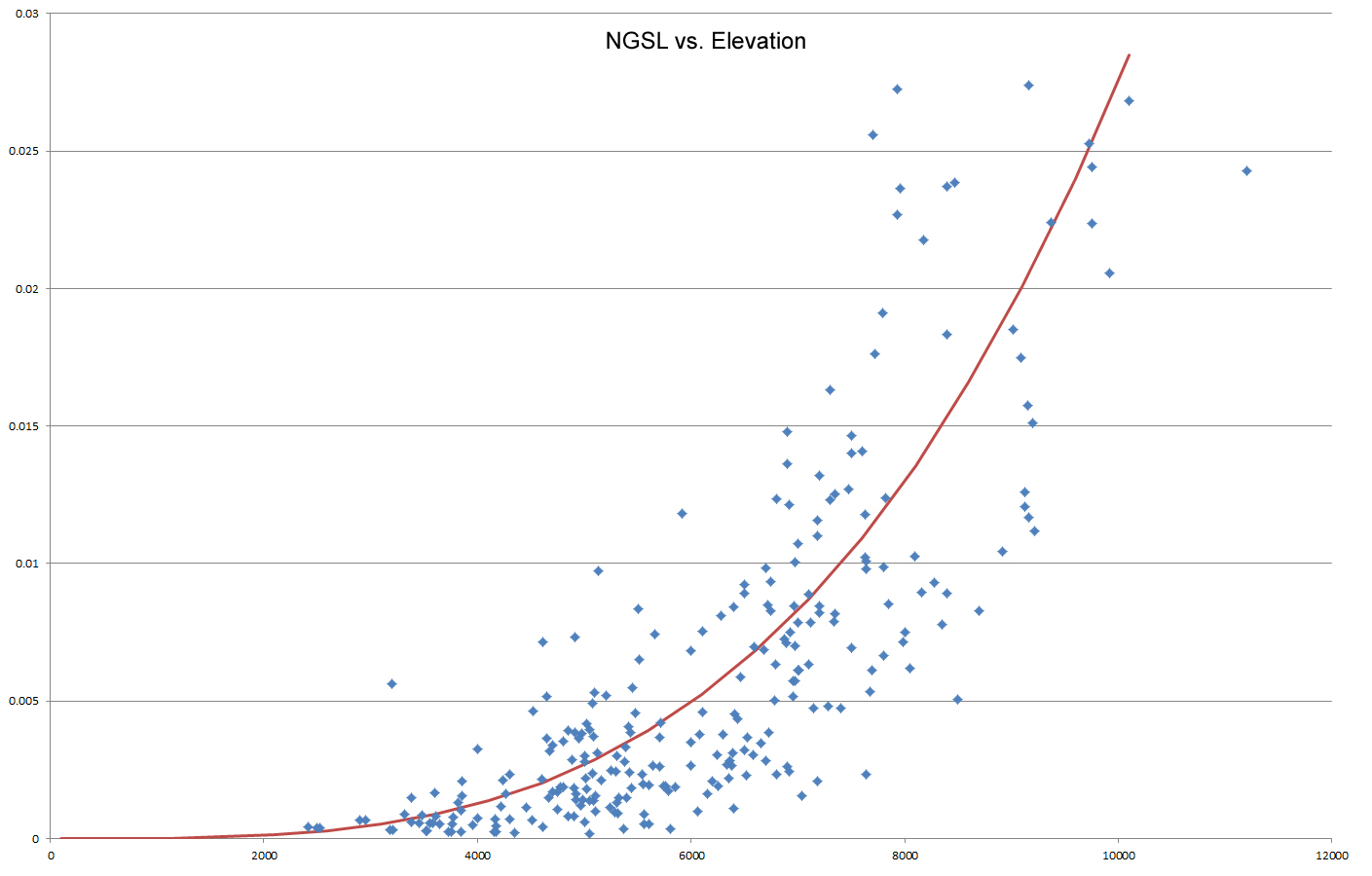Here is my first draft of the (Online) Arizona Ground Snow Load Map:
The interpolation routine may be too simplistic. The data seems to have a lot of sporadic zero snow loads that may make generating isolines somewhat tricky in my opinion.
I am currently only using the three closest stations to interpolate from for a given point of interest, perhaps using more points might be a better method (or worse). I am currently waiting on a response back
from the creators of the Montana Snow Load map to get some guidance and feedback on their method of choice in this regard.
Another interpolation method that may be more accurate is the Kriging method but I am researching that further, for now I have implemented IDW (inverse distance weighting) which seems like a fairly rational approach.
I think it would be useful to take current map I have created and script a program that queries the map on a grid at approximately every 2 miles, from that (30,000 data points) a surface plot of the NGSL data can be constructed and then reviewed for any anomalies. Then if feasible a hard copy map can then be generated with NGSL isolines similar to the Idaho Ground Snow Load map.
There are currently no local exceptions and the weighting and interpolation routine used for each climate zone (entire map) is the same however all of this can easily be customized by zone, elevation, or any other parameter that comes into play. In other words an entirely different interpolation routine could be used for each zone, county, even city or elevation depending on what trends are observed. The IDW interpolation itself can also be adjusted with the "P" factor to give more influence to data points that are closer or farther away to the point of interest. In a nutshell what I have created is simply a rough draft, there is a significant amount of fine tuning and tweaking that can be done and will probably need to be done to make this a usable product.
The interpolation routine may be too simplistic. The data seems to have a lot of sporadic zero snow loads that may make generating isolines somewhat tricky in my opinion.
I am currently only using the three closest stations to interpolate from for a given point of interest, perhaps using more points might be a better method (or worse). I am currently waiting on a response back
from the creators of the Montana Snow Load map to get some guidance and feedback on their method of choice in this regard.
Another interpolation method that may be more accurate is the Kriging method but I am researching that further, for now I have implemented IDW (inverse distance weighting) which seems like a fairly rational approach.
I think it would be useful to take current map I have created and script a program that queries the map on a grid at approximately every 2 miles, from that (30,000 data points) a surface plot of the NGSL data can be constructed and then reviewed for any anomalies. Then if feasible a hard copy map can then be generated with NGSL isolines similar to the Idaho Ground Snow Load map.
There are currently no local exceptions and the weighting and interpolation routine used for each climate zone (entire map) is the same however all of this can easily be customized by zone, elevation, or any other parameter that comes into play. In other words an entirely different interpolation routine could be used for each zone, county, even city or elevation depending on what trends are observed. The IDW interpolation itself can also be adjusted with the "P" factor to give more influence to data points that are closer or farther away to the point of interest. In a nutshell what I have created is simply a rough draft, there is a significant amount of fine tuning and tweaking that can be done and will probably need to be done to make this a usable product.

